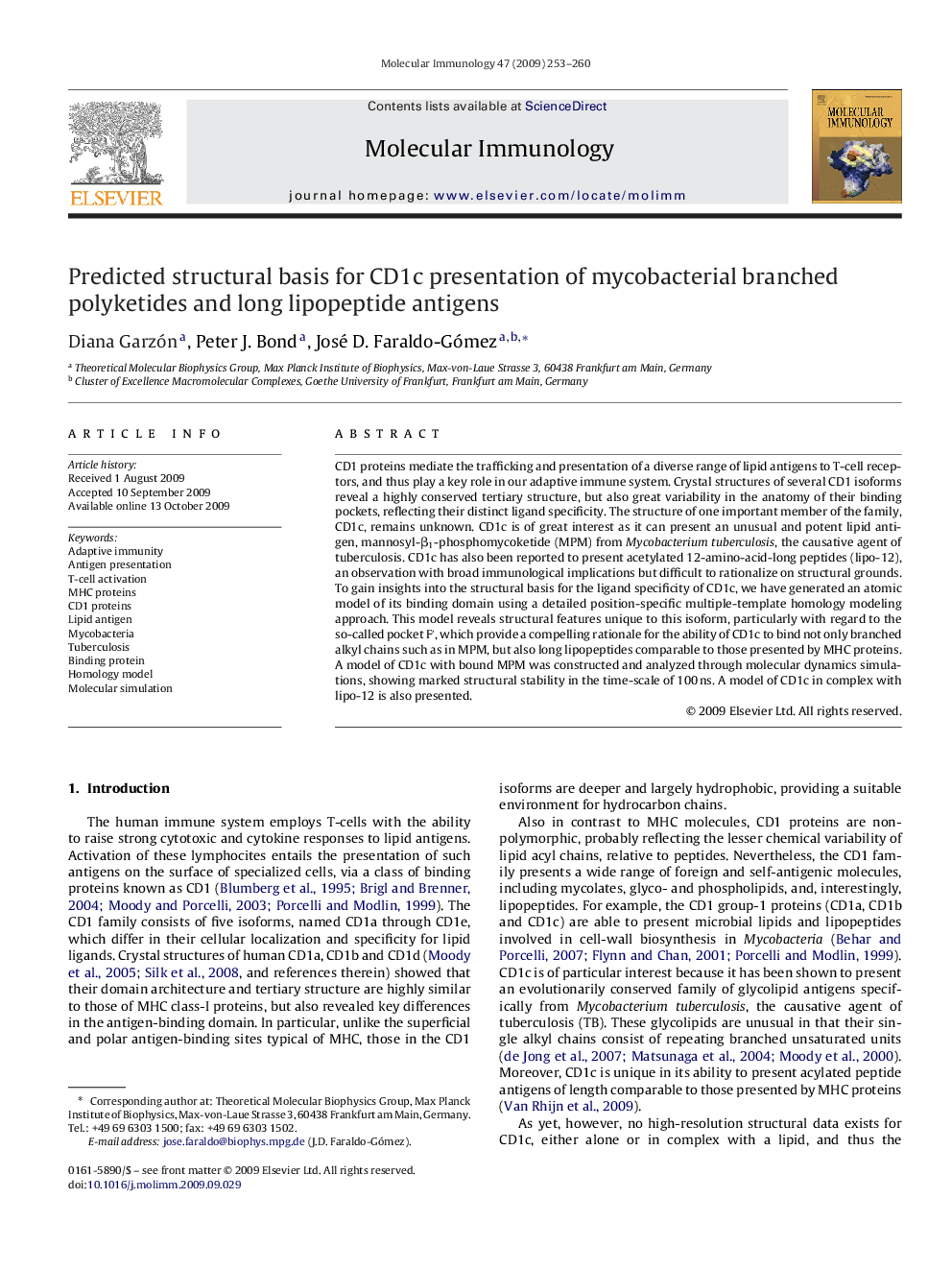| Article ID | Journal | Published Year | Pages | File Type |
|---|---|---|---|---|
| 5917583 | Molecular Immunology | 2009 | 8 Pages |
Abstract
CD1 proteins mediate the trafficking and presentation of a diverse range of lipid antigens to T-cell receptors, and thus play a key role in our adaptive immune system. Crystal structures of several CD1 isoforms reveal a highly conserved tertiary structure, but also great variability in the anatomy of their binding pockets, reflecting their distinct ligand specificity. The structure of one important member of the family, CD1c, remains unknown. CD1c is of great interest as it can present an unusual and potent lipid antigen, mannosyl-β1-phosphomycoketide (MPM) from Mycobacterium tuberculosis, the causative agent of tuberculosis. CD1c has also been reported to present acetylated 12-amino-acid-long peptides (lipo-12), an observation with broad immunological implications but difficult to rationalize on structural grounds. To gain insights into the structural basis for the ligand specificity of CD1c, we have generated an atomic model of its binding domain using a detailed position-specific multiple-template homology modeling approach. This model reveals structural features unique to this isoform, particularly with regard to the so-called pocket Fâ², which provide a compelling rationale for the ability of CD1c to bind not only branched alkyl chains such as in MPM, but also long lipopeptides comparable to those presented by MHC proteins. A model of CD1c with bound MPM was constructed and analyzed through molecular dynamics simulations, showing marked structural stability in the time-scale of 100 ns. A model of CD1c in complex with lipo-12 is also presented.
Keywords
Related Topics
Life Sciences
Biochemistry, Genetics and Molecular Biology
Molecular Biology
Authors
Diana Garzón, Peter J. Bond, José D. Faraldo-Gómez,
